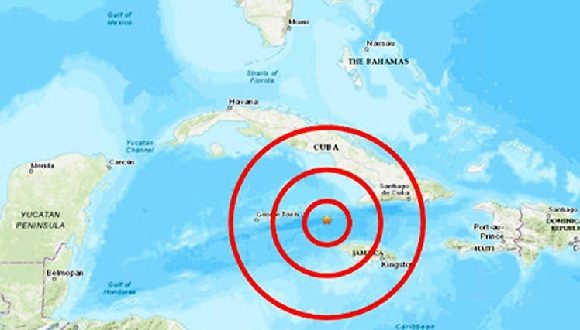
HAVANA, Cuba, May 10 (ACN) The National Seismological Service of Cuba (SSNC by its Spanish acronym) is focusing on technological renovation in order to upgrade the country's early warning systems for earthquakes and tsunamis.
According to Granma newspaper, the National Center for Seismological Research (Cenais by its Spanish acronym), founded in 1992, is leading this effort. Its mission is to guarantee the monitoring and analysis of seismic activity in the country, providing information to the State's decision-making bodies.
The institution assumes the development of software for the visualization and access to seismological information through its web page; the spatial-temporal-energetic analysis of the incidence of earth tremors; and the monitoring of sudden variations in sea level, which could indicate a tsunami alert.
The head of the National Seismological Service and technical vice director of Cenais, Enrique Diego Arango Arias, pointed out that the SSNC currently has 19 seismological stations, several of them as a result of international collaboration with Canada, and the modern technology installed makes it possible for each record to be visualized in the National Civil Defense General Staff.
During 2020, new Russian technology stations were prepared, acquired by the Ministry of Science, Technology and Environment (Citma by its Spanish acronym), in order to complete the network of stations in the central-western part of the country, the specialist pointed out.
He noted that another important step in strengthening the SSNC was the implementation, starting in 2017, of a network of accelerographs in Santiago de Cuba and Guantanamo cities, to determine the accelerations of the land at the exact moment of the occurrence of a moderate or strong earthquake.
This information provides essential knowledge for future urban planning actions, in addition to promoting studies on how seismic waves are attenuated in each place and to know the response of the soil, an extremely important issue in construction, he said.
Likewise, starting in 2018, and as part of an international project in collaboration with French and Cuban institutions, the center's specialists began to take measurements at different locations in the eastern region, in order to determine the dynamics of the lithosphere in that area, and assess whether it is registering a significant deformation in relation to the plate boundary, a premonitory sign of the probable occurrence of a moderate or strong earthquake.
Arango Arias emphasized that such data are of vital importance for the Life Task, since it is possible to know which blocks in the study area show a tendency to sinking and which to rising in relation to sea level.
Every year in Cuba, an average of 5,000 to 6,000 earthquakes of different magnitudes occur, most of them in the southeastern region associated with the Oriente fault.










Nos reservamos el derecho de no publicar los comentario que incumplan con las normas de este sitio